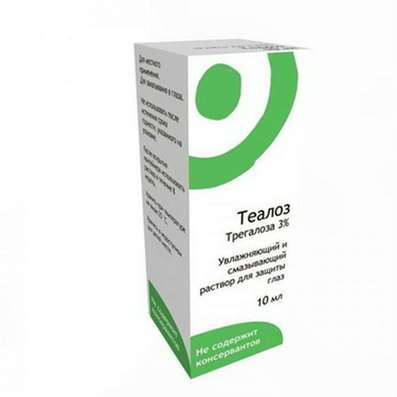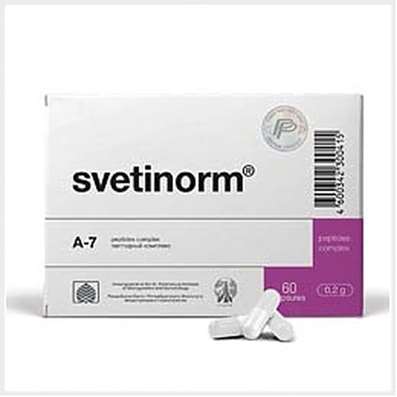Dyslexia
25 Jul 2017
About problems with reading and understanding the text in children, the causes of dyslexia and ways of rehabilitation.

Dyslexia is the inability to master reading. Here, "inability" implies not absolute, but relative difficulties, that is, a person suffering from dyslexia, learn to read is much harder than an ordinary child. Along with dyskulkuliey and dysgraphy, dyslexia is an innate and not acquired developmental disorder. Discalculation is the inability to master mathematics, dysgraphy is the inability to master writing. For acquired (for example, as a result of brain injuries) disorders usually use the prefix "a": alexia, acalculia, agraphia.
Dyslexia is manifested in the fact that a person who, it would seem, developed normally, has problems with schooling at school. The child slowly learns to read, reads with difficulty and does not like to do it. Parents in such cases are advised to send children to classes with a specialist who can help him in solving this problem.
The causes of dyslexia and its diagnosis
Hereditary causes of dyslexia were indicated at the end of the XIX century, when the first descriptions appeared in the literature. The disorder is caused by the fact that in a developing person, because of genetic characteristics, the brain is formed in such a way that its structure and functional characteristics do not allow easy and quick reading.

The inability to learn with dyslexia is relative, not absolute. It is necessary to compare how easily or with what difficulty a child learns the skill of writing, with other parameters of development. Let us assume that a preschooler has a typical intellect, hearing, vision, and there are no neurological or psychic disorders. But at school he begins to lag behind - he has great difficulty with mastering the reading skills, and no one expected the child to face such difficulties.
In this case, dyslexia should be diagnosed and considered as one of the variants of the developmental disorder. Difficulties can be of a different specific character - depending on the culture in which the child is growing, and on the language in which he learns to read.
Dyslexia in different languages
In my studies, I regard dyslexia as a specific type of learning disability associated with reading a single word - it's a process of decoding. In other words, decoding is how quickly a person can read a word without errors. This characteristic of dyslexia is especially important for "opaque" languages, for example, for English. In such languages there is no direct, "transparent" correspondence of phonemes and graphemes.

In order to speak correctly and without accent in your native language, you need to be able to hear and manipulate phonemes, often called indivisible sound speakers (all the words of a spoken language are collected from phonemes). In order for a child to learn to read, he must have a representative space of his native language, which is described in phonemes. When teaching reading these phonemes you need to learn how to map, that is, translate, into graphemes - visual native speakers. The alphabetic languages, of which Russian is an example, differ from each other, depending on how accurately and unambiguously the phonemes are mapped into graphemes or vice versa.
When mapping graphemes into phonemes, you decode (voicing or not) a word. When mapping phonemes to graphemes, you are engaged in spelling. In Russian it is enough to read - to map graphemes to phonemes. Few words, because of which there are difficulties with coding, in this case you need to know the pronunciation of the word. For example, "the sun" - when reading the letter "L" is not readable, but if you still read the "sun", then no one will consider this a mistake. That is, in the Russian language, once you mastered the alphabet, that is, the principle of coding, there are almost no errors in reading, unlike English, where many words are read completely differently than they are written. The situation with spelling in Russian is quite different: coding phonemes into graphemes is a very difficult task.
Dyslexia in Russia and the USA
There are few specialists in Russia who can diagnose dyslexia, because the International Classification of Diseases of the 10th revision (ICD-10) is used in the country and there is no such diagnosis in it. There is a diagnosis of a specific reading disorder F81.0, but these disorders do not differentiate into inability at the word level and inability at the level of the coherent text.
The fifth edition of the American Diagnostic and Statistical Manual of Mental Disorders (DSM-V) uses the term "dyslexia", on the basis of this licensed specialist - pediatrician, psychologist, psychiatrist, neurologist - can make the appropriate diagnosis. Dyslexia is defined as "learning difficulties characterized by problems with precise or fluent word recognition, poor decoding, and poor spelling abilities" - "a pattern of learning problems characterized by problems with accurate or fluent word recognition, poor decoding, and poor spelling Abilities (p.67, DSM-5) ".
The diagnosis is based on clinical observation and psychological testing, which identifies the problem. Experts use intelligence tests, check the person's phonetic skills, skills related to the development of native language and speech, and skills related to elements of cognitive processes, such as memory. Based on a large number of tests, a detailed conclusion is written, and on the basis of this, a diagnosis is made.
The study of dyslexia
For the first time this developmental disorder was documented in the German-language literature at the end of the 19th century. It described the cases when children who attend regular schools and grow up in well-off families have problems with training. The disorder was designated as neurological, and its family forms were immediately described.
In these early works, dyslexia was called in different ways, including congenital verbal blindness. At the beginning of the 20th century, the American scientist Samuel Orton introduced the concept of "dyslexia" in his works. Orton also conducted the first population studies in Iowa (USA) to establish the frequency of occurrence of this disorder - before him, scientists described single cases.
Problems with reading and understanding
The study of dyslexia in Russia is rooted in Soviet psychology. Lev Vygotsky, a Russian psychologist who worked with Russian linguists, himself did not dyslexic, but his students were concerned with this problem. Rosa Levin, who worked at Vygotsky's Institute of Defectology, used the word "dyslexia" in her dissertation and quite unequivocally said that it was a disorder that resulted from the unformed phonetic representation of the native language. Her method with dyslexia was preventive and consisted in creating a system of speech therapy at the state level.
Speech therapists loaded with additional tasks of children with problems of forming phonemic representations (these problems can be found in a child before he encounters the task of mastering the reading skill). Such early logopedic support was aimed at correcting phonetic representations of the native language. As soon as this happened and the person mastered the mapping task, reading immediately became not so terrible a task. The child began to recognize the correspondence of sounds and letters, to sound and decode words. From this, the child did not become the first (most accurate and fastest) reader, but learned to interact with the text.
We are talking about dyslexia, that is, the problem of reading at the level of single words, and this is important, because once you go on to the text, you need to understand its content: we do not read to just decode, but to understand what was written.
As soon as you go to the text, additional problems begin: you need to understand the meaning of morphology - be able to interpret prefixes, suffixes, endings. In addition, one must possess the skills of critical thinking in order to be able to find out what the text is about, to understand who the main characters are in it, what is the object and the subject. And this is not dyslexia, but this is a violation of the understanding of what has been read, another type of inability to learn reading. Of course, they are interrelated, but dyslexia is complexity at the level of a single word that leads to problems with understanding. But difficulties with understanding are also encountered in the absence of dyslexia. That is, you can perfectly decode and at the same time have difficulty understanding the reading.
For additional diagnosis a person should be sent as soon as he has difficulty understanding the reading or decoding single words. Often they do not pay attention to it in the mass school: they measure only the speed of reading, and understanding is rarely recorded. Therefore, a situation arises when a third-grade student does not have time for reading or for math, because he simply can not understand the task.
At what age is dyslexia manifested
Dyslexia can not occur suddenly, it must have unambiguous signs in its early development. If a person has had everything normal, and the problems have arisen after a brain injury, then this alexia is an acquired, not an inborn disorder. If a person has always been difficult to read, he did not know why, then, most likely, dyslexia simply was not diagnosed.
Dyslexia is a condition that lasts a lifetime. Like any developmental disorder, it is incurable, but you can reduce its intensity, successfully rehabilitate. If you do not start dyslexia at an early age, then in the future it will make a person's life worse. Dyslexia has a high rate of conjugation with other disorders, for example, with attention deficit hyperactivity disorder. Problems with reading can adversely affect the mental state in adulthood. People with dyslexia, which were not involved in childhood, often in adulthood suffer from depression and anxiety disorders.
Rehabilitation of dyslexia
Dyslexia, firstly, is not lethal, and secondly, it is rehabilitated. And if the early environment is built correctly, if the reading instruction is built in such a way that an established linguistic representation is formed first, and then this representation is translated into the language of grapheme, if the family pays much attention to it, then dyslexia, despite the peculiarities of the brain structure, may not arise or arise , But not to disrupt the harmony of development, not to become a problem.
Usually people with dyslexia who know about their difficulties and understand their experiences do everything to prevent such difficulties from their children. In the world there are quite a lot of studies where children of parents with dyslexia were observed during early development. Studies show that a large number of children are very successfully rehabilitated if they pay attention to it before the child starts falling behind in school.
The main principle of rehabilitation is proper reading instruction. Especially in alphabetical languages, it should be based on a phonetic-phonemic principle - direct phased learning with a primer. When teaching immersion in their native language dyslexics very quickly get lost and begin to lag, because they can not build phonetically-grapheme systems themselves, unlike a typically developing child. They need to help in this systematically.
An ordinary child learns for a long time that "a" corresponds to several phonemes in the Russian language - "a", "o" - depending on the context. And a child with dyslexia such mapping will be very difficult. That is why early learning to read skills with immersion in your native language is completely counter-indicative.
For a problem diagnosed at a later age, there is a fairly large number of rehabilitation methods, many companies are engaged in them in the West. All of them are related to the need to go to the phonemic roots, to build them, to create their representation, where both phonemes and graphemes are represented. There are several such methods, but the principle of Samuel Orton and his followers dominates - the Orton-Gillingham approach. There are programs that work with vocabulary (Just Words) or fluency reading (RAVE-O). The type of the program is selected depending on the characteristics of the deficit in the child, his age and neglect of the problem.

 Cart
Cart





